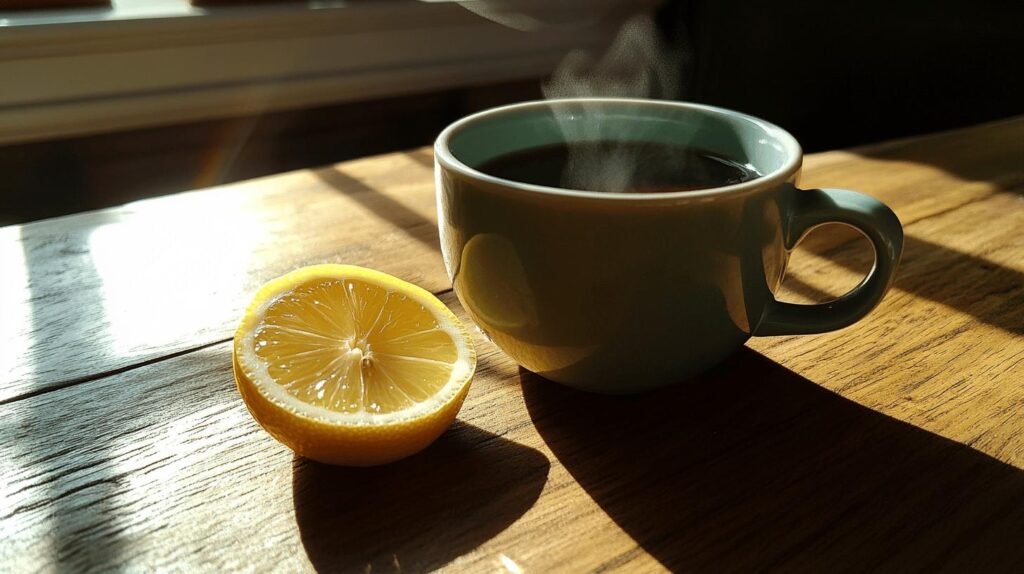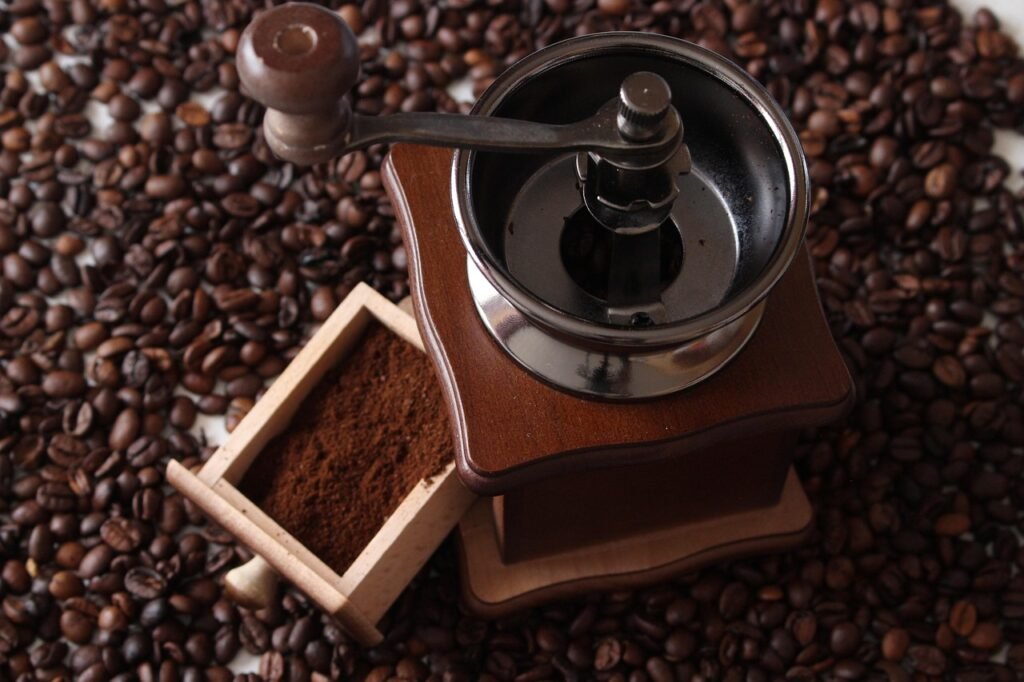
Artisanal Rituals for a Memorable Customer Experience
How can brands create a more balanced and memorable customer experience by blending artisanal product quality with thoughtful everyday rituals that keep people coming back?

Did you know a cup of Earl Grey tea can contain as much caffeine as a can of soda? The amount of caffeine in Earl Grey, often perceived as minimal, actually ranges from 40 to 120 mg per cup, influenced by factors like brewing time and tea leaf quality. This puts its caffeine levels in a surprising position between green tea and coffee, affecting your daily caffeine intake more than you might expect. Understanding these variations can help coffee aficionados adjust their brewing methods to achieve their ideal caffeine balance. Read on for more detailed insights and comparisons.
Earl Grey tea usually contains 40-70 mg of caffeine per 8 oz serving, similar to other black teas. The range can extend from 40 to 120 mg per cup. This depends on several factors, mainly brewing time and the quality of the tea leaves.
Factors influencing the amount of caffeine in Earl Grey tea include:
Earl Grey tea is known for its unique flavor, thanks to bergamot oil. This gives it a citrusy note but does not change its caffeine content. The caffeine level comes from the black tea base. So, bergamot only adds aroma, making Earl Grey popular for both its caffeine and taste.

How does Earl Grey compare to other drinks? Earl Grey is between green tea and coffee in caffeine content. It’s higher than green tea, which is 20-45 mg per 8 oz, but lower than coffee with 95-200 mg per cup. Herbal teas are caffeine-free, making Earl Grey a moderate choice for caffeine.
For those sensitive to caffeine, Earl Grey might be a better option than coffee. It has less caffeine, possibly leading to fewer side effects like a faster heart rate or anxiety. It provides a balanced caffeine boost, less likely to cause jitters or sleep issues. However, monitoring personal tolerance is vital, as even moderate caffeine intake affects some individuals.
Preparation methods greatly influence the amount of caffeine in Earl Grey tea. Longer brewing times mean more caffeine is extracted. Using hotter water also increases caffeine content because it speeds up extraction. These factors determine caffeine levels in your cup. So, preparation is key in managing caffeine intake.
The tea brand also matters for the caffeine content. Brands vary in caffeine levels due to the quality and blend of tea leaves used. Some brands have more black tea, increasing caffeine. Others might have extra ingredients that reduce caffeine concentration. Thus, choosing a brand based on its caffeine profile helps find the right caffeine level for you.
To effectively manage caffeine intake, consider these tips:
These strategies help customize caffeine content in Earl Grey tea to suit personal needs.

Earl Grey tea has benefits due to caffeine and bergamot oil. The caffeine boosts alertness, offering energy without the coffee crash. Regular drinking supports heart health, potentially lowering LDL cholesterol and improving blood vessel function thanks to antioxidants.
The caffeine can disrupt sleep if consumed near bedtime. Overconsumption might also cause anxiety or a higher heart rate. Moderation is key to enjoying benefits without negatives. People sensitive to caffeine should monitor consumption to balance health and well-being.
Decaf Earl Grey suits those wanting the signature citrus flavor but without caffeine’s effects. Less than 5 mg per cup. The decaffeination process keeps the bergamot aroma while cutting caffeine. It’s great for evening tea or for those sensitive to caffeine.
For caffeine-free choices, Earl Grey Rooibos is striking. It swaps black tea with rooibos, a naturally caffeine-free herbal tea. What makes it appealing? It provides a similar full-bodied flavor with familiar bergamot, without caffeine. Perfect for tea lovers wanting the essence of Earl Grey without caffeine jitters.
Exploring the amount of caffeine in Earl Grey tea reveals a nuanced range of 40-70 mg per serving, influenced by factors like brewing time.
Compared to other beverages, Earl Grey offers a balanced caffeine option, sitting between green tea and coffee. Preparation methods and brand variations further impact caffeine levels, enabling customization to personal preferences.
Understanding these factors helps in tailoring tea consumption for both enjoyment and health benefits.
With options like decaffeinated Earl Grey, tea lovers can enjoy its classic essence without compromising on caffeine habits.
Earl Grey tea typically contains 40-70 mg of caffeine per 8 oz serving, making it moderate in caffeine compared to other beverages.
Espresso contains significantly more caffeine, approximately 63 mg per 1 oz shot, while Earl Grey has 40-70 mg per 8 oz cup.
Earl Grey tea has a moderate caffeine content, which can keep you awake, especially if consumed in larger quantities or close to bedtime.
Earl Grey can enhance mental alertness and support heart health, but excessive intake might disrupt sleep and increase anxiety. Moderation is key.
Decaffeinated Earl Grey contains less than 5 mg of caffeine per cup. Variations include Lady Grey, known for citrus notes, and caffeine-free Earl Grey Rooibos.

How can brands create a more balanced and memorable customer experience by blending artisanal product quality with thoughtful everyday rituals that keep people coming back?

Independent coffee shops have always been about more than caffeine—they’re hubs of creativity, connection, and care. As café culture continues to evolve, new trends are

Introduction Independent cafes win when they feel like the neighborhood’s living room and operate with the discipline of a great kitchen. Below is a quick

Discover how top specialty coffee brands create lasting loyalty through storytelling, sourcing, and community connection. Real tips from 6 industry experts.

Discover the ultimate showdown between two beloved coffee brewing methods: the French press and Chemex. Explore how each technique caters to distinct palates, with the French press delivering bold flavors and the Chemex presenting a bright, clean taste.

Unlock the secrets to brewing the perfect cup of coffee with our comprehensive guide on using a coffee scale. Discover how precise measurements enhance flavor and consistency while eliminating bitterness.

Discover how water temperature plays a vital role in brewing the perfect cup of coffee. This article delves into the ideal temperature range of 195°F to 205°F for optimal flavor extraction, enhancing the enjoyment of high-quality beans.

Discover the world of curated specialty coffee bundles, perfect for enthusiasts seeking quality and craftsmanship. This article explores the benefits of ethically sourced, small-batch beans from brands like Equipoise Coffee, offering diverse flavor profiles that elevate your brewing experience.

Discover the art of manual brewing to elevate your coffee experience! This article explores various techniques like pour-over, French press, and AeroPress, revealing how they enhance flavor and your connection to every cup.